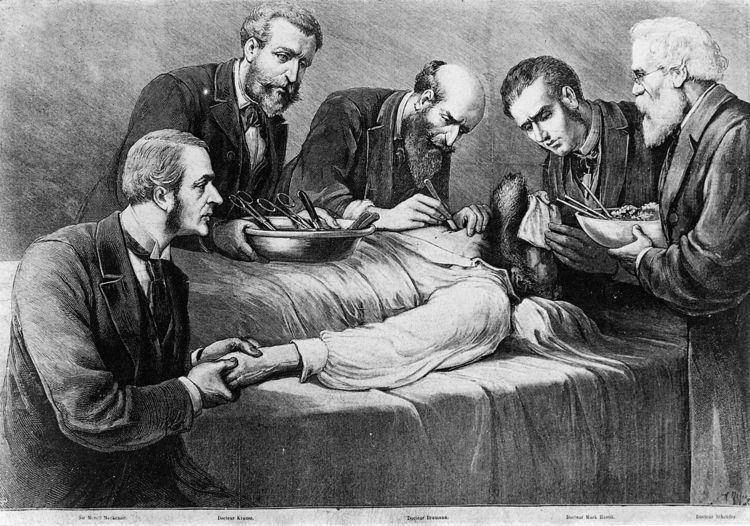Name Friedrich von | Died April 21, 1913 | |
 | ||
Education University of Konigsberg | ||
Friedrich Gustav von Bramann (September 25, 1854 – April 21, 1913) was a German surgeon born in Wilhelmsberg near Darkehmen, East Prussia.
He studied medicine at the University of Königsberg where he joined the Corps Hansea. He became assistant surgeon to Ernst von Bergmann at the Charité in Berlin. In 1889 he declined the call to the University of Greifswald and became a senior lecturer at the Charité. In 1890 he was appointed professor (Ordinarius) of surgery at the University of Halle an der Saale, succeeding Richard von Volkmann
In 1887-88 he was attending surgeon to the Crown Prince Friedrich Wilhelm (1831–1888) in San Remo. When Friedrich almost choked on a larynx cancer he encouraged Bramann to perform a tracheostomy. Without waiting for Bergmann's agreement, "Fritz" Bramann, known for his icy composure, did so and thus enabled the Prince to ascend to the throne in March 1888. When Kaiser Friedrich III had died only three months later, the autopsy approved Bergmann's diagnosis and Bramann's emergency measure and skipped the former assessment of Morell Mackenzie and Rudolf Virchow.
Bramann was known for his use of minimal invasive surgical practices and his pioneer work in neurosurgery. With neurologist Gabriel Anton (1858-1933), he researched suboccipital puncture and the "Balkenstich method" for treatment of hydrocephalus. The "Balkenstich method" was first introduced in 1908 by Bramann and Anton, and is a procedure in which the corpus callosum is pierced for drainage of cerebrospinal fluid.
Bramann despised academic poly-writing and published only some dozens articles and papers.
He was knighted in 1891 and received high decorations for treating German princes and Turkish dignitaries.
